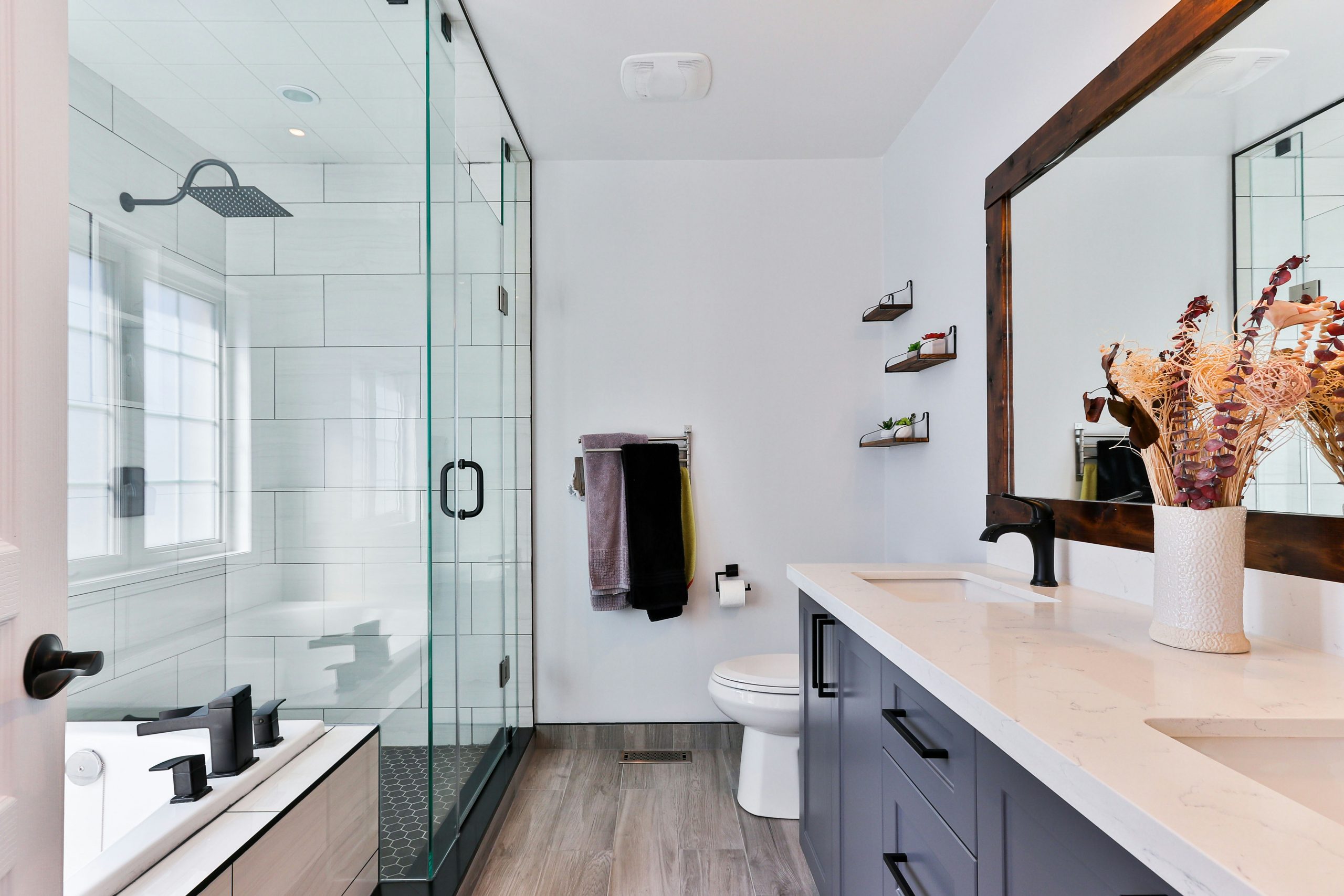
Have you ever stared at your bathroom tiles and thought, “What if I just painted over them?” Well, this home improvement daydream is not uncommon.
It’s a tempting thought, especially when you’re craving a change but don’t want a full-fledged remodel. But here’s the word: painting bathroom tiles could be smart, but only if you do it with planning.
So, if you’re eyeing a relatively cheaper renovation with bathroom tile paint, let’s see if you should do it or pass it!
If you find that painting your tiles doesn’t meet your vision, you may want to explore the New Bathroom Cost to assess a full renovation instead.
Can You Paint Bathroom Tiles?
Yes, you can, and it’s a fantastic way of bathroom renovation without breaking the bank. When your bathroom tiles begin to look tired, but you’re not ready for a full renovation, tile paint bathroom can breathe new life into your space. The paint for bathroom tiles is formulated to adhere to your tiles as it can resist moisture and steam, which makes it suitable for moist environments.
5 Awesome Tips and Tricks for Painting Bathroom Tiles
Painting your bathroom tiles is a smart update to your space without a full renovation, but the key to a successful tile paint job lies in the preparation and application process.
So when you’re ready for bathroom improvement, follow these steps to ensure a durable finish:
Prep the Tiles By Cleaning and Priming
Preparation will set the foundation for your bathroom tile paint ideas, so give them due attention. Start by giving your tiles a thorough cleaning and then remove any soap scum, mold, or mildew with a strong cleaner.
Also, make sure the tiles are completely dry before proceeding, and lightly sand them as sanding roughens up the surface so the primer can adhere better.
After that, apply a high-quality primer designed for tiles as it forms the foundation for your paint so it sticks properly and lasts longer.

Coat the Paint and Let it Rest for 24 Hours
When your primer has dried, it’s time to paint the tiles for DIY bathroom remodeling. For that, use a small roller to create an even coat and avoid brush marks. You should go for epoxy or acrylic paint that’s formulated for bathroom use, as it can withstand moisture and humidity.
Apply the paint in thin, even layers. After the first coat, let it dry for at least 24 hours before assessing if a second coat is necessary.
Do a Topcoat
Applying a clear topcoat post the first layer can increase the longevity and resilience of your paint job. The topcoat is a sealant that protects your paint from peeling, chipping, and moisture damage. So make sure the topcoat is compatible with the paint you’ve used and is suitable for wet areas.
Choose the Right Time and Ventilation
Painting bathroom tiles requires good ventilation for drying and your safety. Safety how, you ask? When you use strong fumes from primers and paints, ventilation makes sure there’s enough air coming in and going out. Therefore, you should plan your project when you can keep windows open or use fans to circulate air.
Use Painter’s Tape for Clean Edges
If you want professional-looking results and don’t want paint splatters across the bathroom, use painter’s tape. The tape will mask off areas you don’t want to tile paint for bathroom tiles, like grout lines, fixtures, or the edges where tiles meet walls and floors. Marking off these edges will give you clean lines and protect surfaces from accidental strokes.
Gear Up for the Much-Needed Bathroom Upgrade With Tile Paint
If you’re thinking about updating your bathroom, a fresh coat of paint on the tiles can work wonders. This simple DIY project can refresh your space with the right preparation and appropriate paint. No need for a major overhaul—just a straightforward paint job will do.
If you need experts’ help with bathroom renovation, reach out to us at Chaboun Construction. We’re here to help you achieve the perfect finish and make your project a success.
Shower tile paint
If you’re looking to revamp your shower space without a complete overhaul, shower tile paint can be an excellent solution. This specialized paint is designed to withstand the unique challenges of a wet environment, providing a durable finish that resists moisture, mold, and mildew. With a variety of colors and finishes available, you can easily customize your shower tiles to match your personal style or breathe new life into an outdated design. The key to a successful application lies in proper preparation: thorough cleaning, sanding, and priming are essential steps to ensure the paint adheres well and lasts longer. Plus, the transformation can be achieved in just a weekend, making it a cost-effective way to achieve a fresh look without the hassle and expense of a full remodel.
FAQs
Is Painting Bathroom Tiles A Good Idea?
Painting bathroom tiles is a good move if you want to update your bathroom without a full-scale renovation. Using bathroom tile paint is perfect for floors and walls that are outdated or just need a new splash of color. It’s cost-effective and can change the look of your bathroom over just a weekend. Also, it helps you customize your space to your taste without the disruption and cost of tearing out old tiles.
What Paint To Use On Tiles In A Bathroom?
The best paint for bathroom tiles is either epoxy or acrylic latex. These paints are formulated to handle bathrooms’ high humidity and moisture. They adhere well to tile surfaces and provide a durable coat that resists peeling and mold.
Does Tile Paint Last In A Shower?
Tile paint can withstand the rigors of a shower area, provided you prepare and seal it correctly. After applying the paint, you must cover it with a waterproof sealant. This sealant keeps the paint from the constant moisture and direct water contact in showers.



